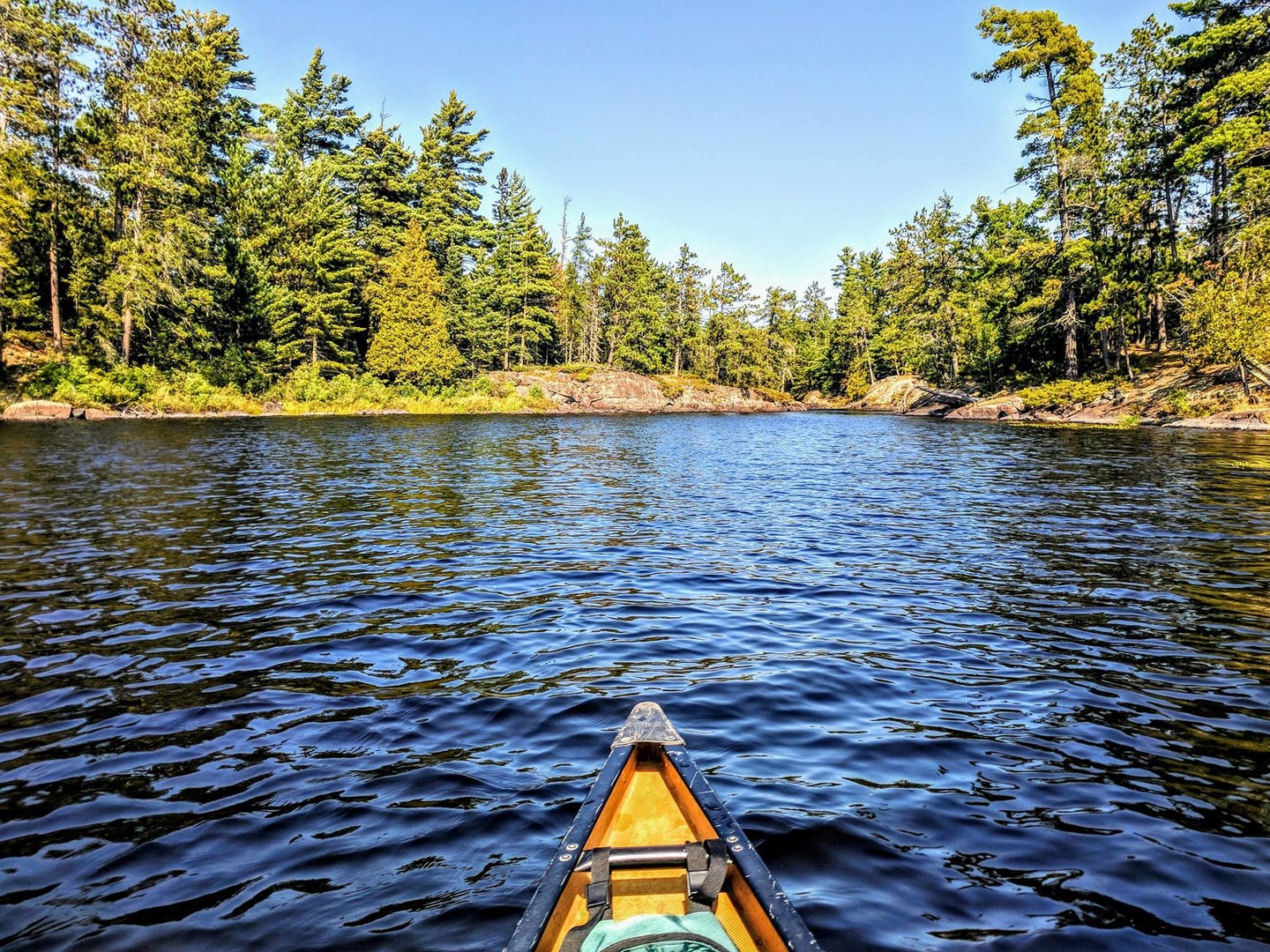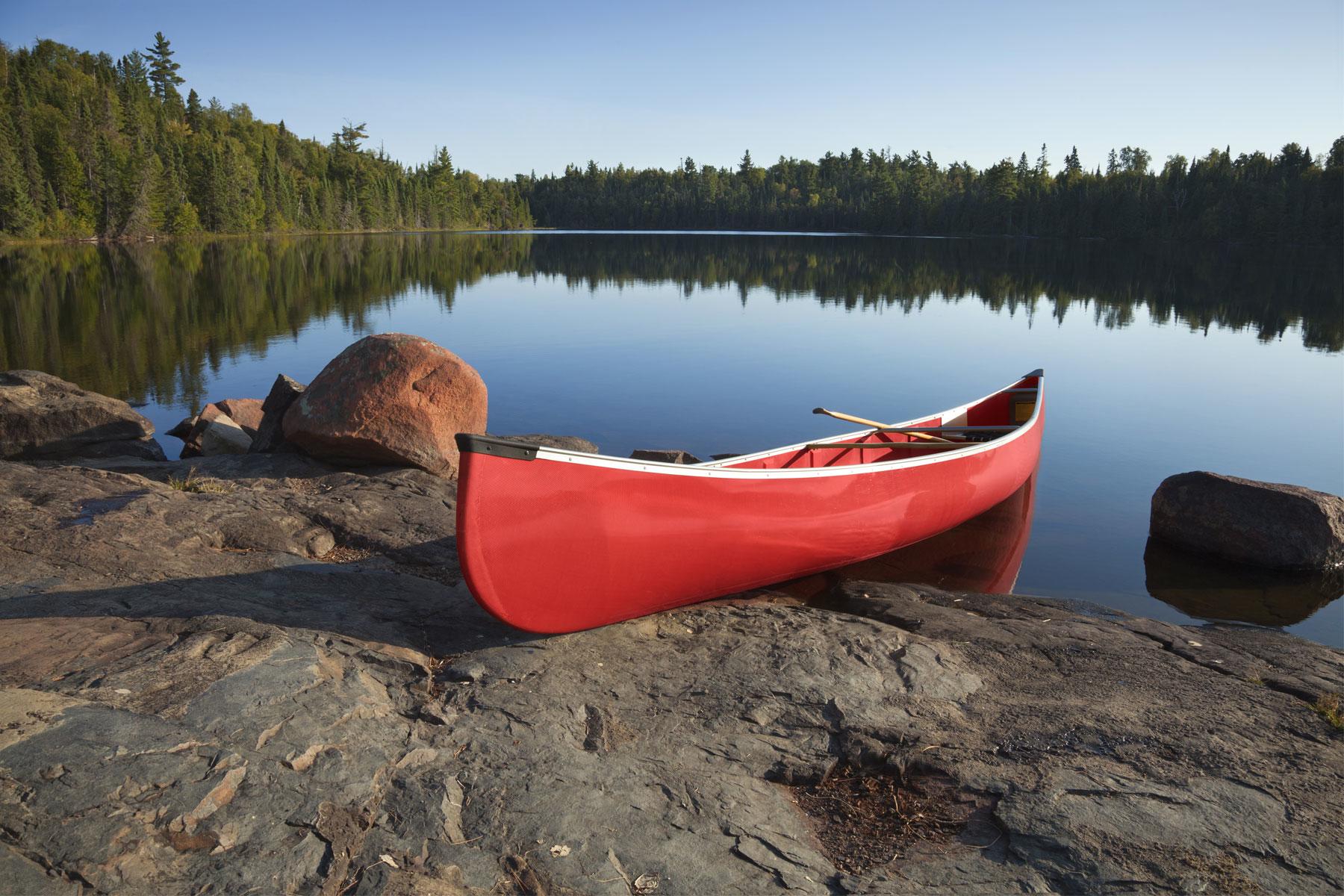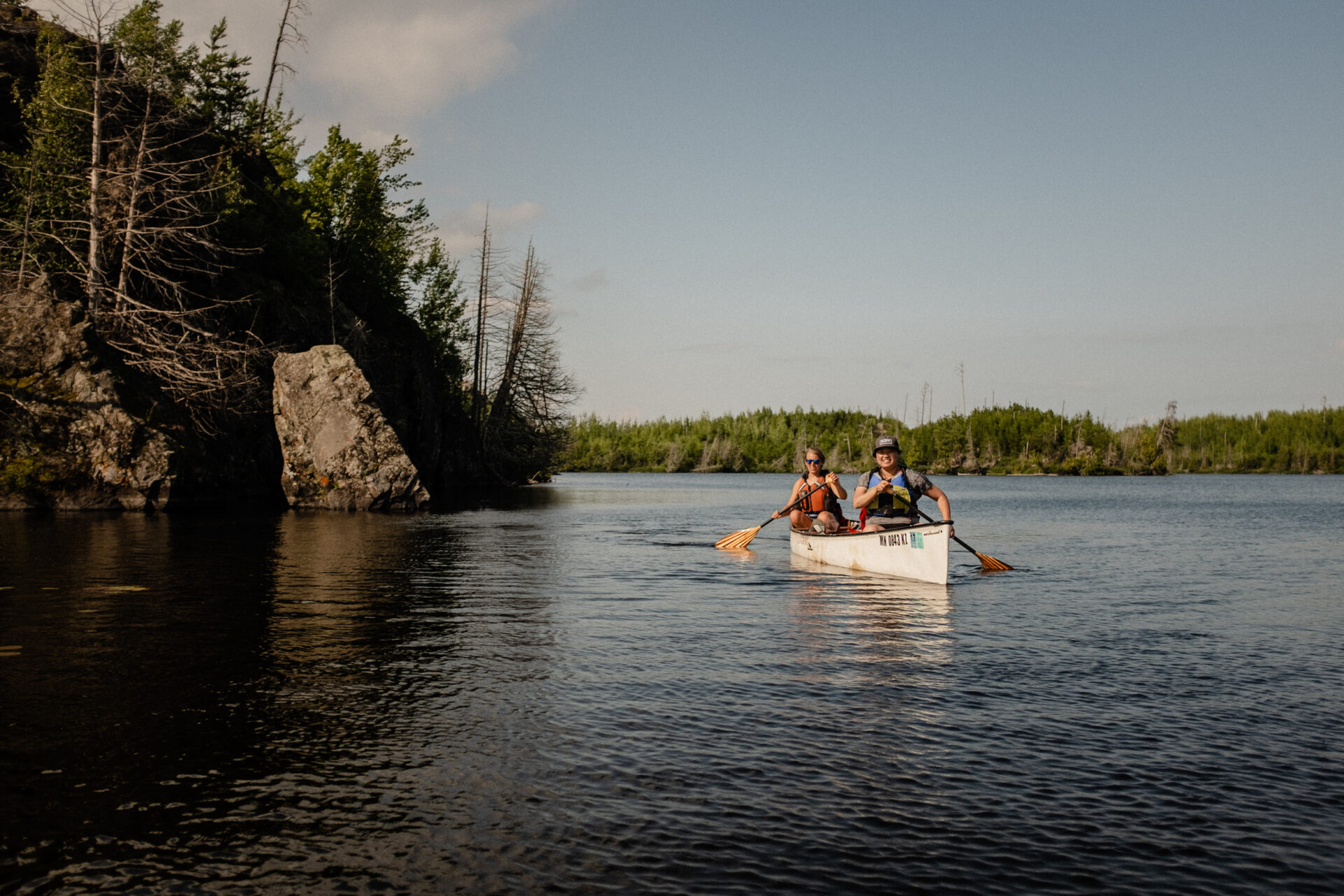I. Introduction to Boundary Waters Canoeing

A. Overview of the Boundary Waters Canoe Area Wilderness (BWCAW)
The Boundary Waters Canoe Area Wilderness (BWCAW) is a vast wilderness area located in northeastern Minnesota, United States. It spans over one million acres and consists of interconnected lakes, rivers, and forests, offering a pristine and remote wilderness experience.
B. Highlighting the Natural Beauty and Wilderness Experience
The BWCAW is known for its stunning natural beauty, including crystal-clear lakes, dense forests, and abundant wildlife. Canoeing in this area provides an opportunity to immerse oneself in the serene and untouched environment of the wilderness.
C. Understanding the Unique Opportunities of Boundary Waters Canoeing
Boundary Waters canoeing offers unique opportunities for adventure and solitude. Paddlers can explore the interconnected waterways, navigate portages, and camp in designated and secluded campsites. It is a chance to disconnect from the modern world and reconnect with nature.
II. Planning a Boundary Waters Canoe Trip
A. Obtaining Permits and Reservations

- Exploring the Permit System for BWCAW
To enter and camp in the BWCAW, a permit is required. Permits are limited and can be obtained through a lottery system. It is important to understand the permit process and apply well in advance.
- Identifying Reservation Procedures and Availability
Reservations for permits can be made online or through authorized outfitters. It is advisable to make reservations as early as possible, especially during peak seasons, to secure preferred entry points and dates.
B. Choosing Entry Points and Routes
- Understanding the Different Entry Points and Their Attributes
The BWCAW has numerous entry points, each offering different access to the waterways. Entry points vary in distance, difficulty, and popularity. Researching and choosing the right entry point is important for trip planning.
- Identifying Popular Canoe Routes in the Boundary Waters
There are many popular canoe routes in the BWCAW, ranging from short day trips to multi-day expeditions. Researching and selecting the right route based on skill level, desired duration, and points of interest is crucial for a successful trip.
III. Canoeing Gear and Equipment for BWCAW
A. Canoe Selection and Outfitting

- Identifying Canoe Requirements for Wilderness Canoeing
When selecting a canoe for the BWCAW, factors such as stability, weight, and durability are important considerations. Canoes should be suitable for portaging and capable of carrying necessary gear and supplies.
- Exploring Options for Canoe Rental and Outfitting Services
Outfitters in the BWCAW region offer canoe rentals and equipment for wilderness trips. These services can provide gear, food, maps, and other supplies necessary for a successful canoeing adventure.
B. Essential Gear for Boundary Waters Canoeing
- Exploring Gear for Camping, Cooking, and Navigation
Essential gear for BWCAW canoeing includes camping equipment such as tents, sleeping bags, and cookware. Navigation tools like maps, compasses, and GPS devices are also necessary for safe and efficient travel.
- Identifying Gear Requirements for Safety and Comfort
Safety gear such as personal floatation devices (PFDs), first aid kits, and emergency communication devices are essential for canoeing in the BWCAW. Additionally, appropriate clothing for varying weather conditions and insect protection should be considered.
A. Paddling Techniques for Wilderness Canoeing

- Exploring Efficient Strokes for Long-distance Canoeing
Efficient paddling techniques, such as the J-stroke and the power stroke, help maintain a straight course and maximize propulsion. Proper body positioning, grip, and paddle placement contribute to efficient and comfortable paddling.
- Practicing Techniques for Maneuvering and Portaging
Techniques such as the sweep stroke and the draw stroke are used for maneuvering the canoe and making turns. Proper portaging techniques, including carrying and balancing the canoe, are important for navigating portage trails between waterways.
- Understanding Map and Compass Navigation in BWCAW
Navigating in the BWCAW requires map and compass skills. Paddlers should familiarize themselves with topographic maps, understand contour lines, and be able to read and navigate using a compass.
- Exploring Navigation Techniques for Portages and Waterways
Navigating portage trails involves recognizing landmarks, following trail markers, and staying on designated paths. On the water, identifying and following natural and man-made features helps maintain the intended route.
V. Wildlife and Scenic Attractions in BWCAW

A. Exploring the Flora and Fauna of BWCAW
The BWCAW is home to a diverse array of flora and fauna. Paddlers can expect to encounter wildlife such as moose, black bears, eagles, loons, and various fish species. Understanding and respecting the natural environment is essential when observing wildlife.
- Identifying Common Wildlife Species and Their Habitats
Researching and identifying common wildlife species and their habitats enhances the wilderness experience in the BWCAW. Understanding their behaviors and respecting their space is important for wildlife observation.
- Highlighting Opportunities for Birdwatching and Wildlife Observation
The BWCAW is a prime location for birdwatching, with a variety of bird species present. Paddlers can enjoy observing and listening to the calls of birds while exploring the waterways and shoreline.
B. Scenic Lakes and Waterways
- Discovering Beautiful Lakes and Rivers in the Boundary Waters
The BWCAW is renowned for its scenic lakes and rivers, offering breathtaking views and opportunities for exploration. Paddlers can enjoy the serenity of secluded lakes, picturesque waterfalls, and stunning shoreline landscapes.
- Identifying Points of Interest and Scenic Areas for Exploration
Researching and identifying points of interest, such as pictographs, historic sites, and scenic viewpoints, enhances the wilderness experience in the BWCAW. Exploring these areas allows paddlers to connect with the rich history and natural wonders of the region.
VI. Camping and Leave No Trace in BWCAW
A. Camping Regulations and Practices
- Understanding Wilderness Camping Regulations in BWCAW
The BWCAW has specific regulations regarding camping, including designated campsites, fire restrictions, waste disposal, and camping distance from water bodies. It is important to understand and adhere to these regulations for responsible wilderness camping.
- Exploring Campsite Etiquette and Requirements
Practicing campsite etiquette, such as leaving no trace, minimizing campfire impact, and respecting other campers’ privacy, ensures a positive and sustainable camping experience. Following campsite requirements helps maintain the natural beauty of the BWCAW.
B. Leave No Trace Principles
- Promoting Minimal Impact and Environmental Stewardship
Leave No Trace principles are crucial to preserving the wilderness and minimizing human impact. These principles include disposing of waste properly, leaving natural features undisturbed, and respecting wildlife and other visitors.
- Implementing Leave No Trace Principles in BWCAW Canoeing
Paddlers in the BWCAW should practice Leave No Trace principles by packing out all trash, using established campsites, and avoiding unnecessary disturbance to the environment. Proper waste disposal, campfire practices, and respecting wildlife habitats are essential.
Boundary Waters Canoeing offers a unique and immersive wilderness experience in the beautiful landscapes of Northern Minnesota. With proper planning, gear selection, navigation skills, and environmental responsibility, canoeists can enjoy the serenity and adventure of the Boundary Waters. From obtaining permits and choosing routes to practicing navigation techniques and practicing leave no trace principles, canoeing in the BWCAW provides an unforgettable outdoor experience for nature enthusiasts and paddlers seeking solitude in the wilderness.
